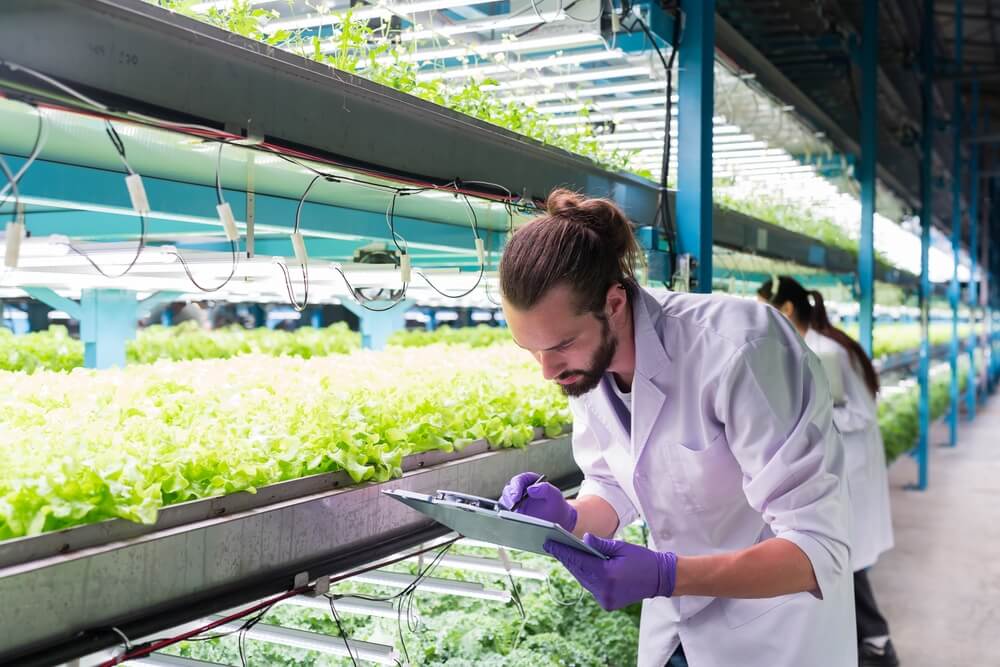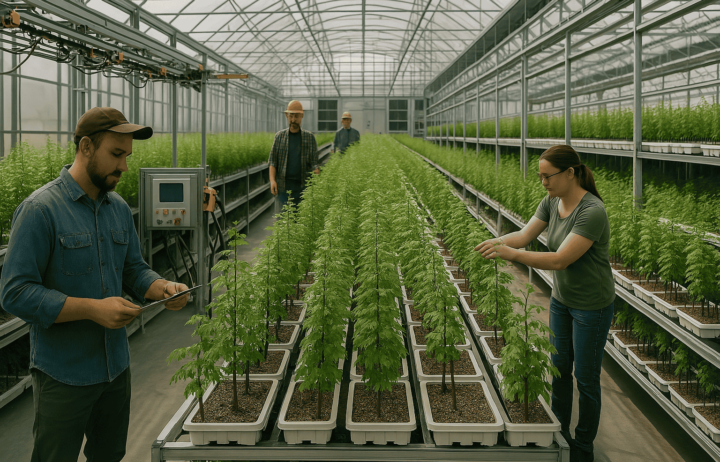
Overcoming Challenges in Commercial Vertical Farming
Vertical farming is revolutionizing agriculture, offering solutions to urban food security and sustainability. However, like all agricultural processes, this innovative approach also faces significant challenges.
This article addresses common obstacles in commercial vertical farming, such as energy consumption, skilled labour shortages, and scaling up production. We provide practical solutions and best practices for aspiring and existing farmers.
Energy Consumption
Challenge
Vertical farms rely heavily on artificial lighting, climate control, and irrigation systems, leading to high energy consumption. This not only increases operational costs but also impacts environmental sustainability.
Solution
- Use Energy-Efficient Technologies: Implement LED lighting, which is more energy-efficient than traditional lighting. LEDs can be fine-tuned to the specific light spectrum required for optimal plant growth, reducing unnecessary energy use.
- Incorporate Renewable Energy: Invest in renewable energy sources such as solar panels or wind turbines. This will reduce reliance on non-renewable energy and lower long-term operational costs.
- Optimize Climate Control Systems: Use advanced HVAC systems designed for energy efficiency. Automation and smart sensors can help maintain optimal conditions while minimizing energy use.
Skilled Labour Shortages
Challenge
The specialized nature of vertical farming requires skilled labour, which can be hard to find. The complexity of managing hydroponic systems, advanced technology, and crop production often necessitates higher expertise than traditional farming.
Solution
- Invest in Training Programs: Develop comprehensive training programs for employees to build the necessary skills. Partner with agricultural colleges and institutions to create internship and apprenticeship opportunities.
- Leverage Automation: Utilize automated systems for planting, monitoring, and harvesting tasks. This reduces the dependency on skilled labour and allows a smaller, less specialized workforce to manage operations efficiently.
- Foster Community and Knowledge Sharing: Join or create networks of vertical farming professionals to share knowledge, experiences, and best practices. This can help spread expertise and address common challenges collaboratively.
Scaling Up Production
Challenge
Scaling up vertical farming operations to meet market demand can be complex and costly. Larger-scale operations require more sophisticated infrastructure, investment, and advanced management strategies.
Solution
- Modular Design: Use a modular design for your farming infrastructure. This allows for gradual expansion as demand grows rather than a massive initial investment. Modular systems also enable more manageable scaling and flexibility.
- Data-Driven Decision Making: Implement advanced monitoring and data analytics to optimize production. Predictive analytics can help understand growth patterns and environmental impacts, ensuring efficient resource use and maximizing yields.
- Secure Additional Funding: Explore various funding options such as grants, loans, and investments from venture capitalists focused on sustainable agriculture. Highlight the benefits and potential returns of vertical farming to attract investment.
Location and Costs
Challenge
Finding affordable space in urban areas for vertical farming can be difficult. High real estate costs can limit the feasibility of establishing new vertical farms.
Solution
- Urban Partnerships: Partner with urban developers and local governments to secure spaces that can be converted into vertical farms. Utilize unused urban spaces like rooftops and abandoned buildings.
- Government Incentives: Look for government programs that incentivize sustainable urban farming initiatives. These may include tax breaks, grants, or subsidies.
- Innovative Land Use: Consider vertical integration in existing structures such as office buildings or warehouses. This approach maximizes space utilization and can lower startup costs.
Temperature and Humidity Control
Challenge
Vertical farms require proper temperature and humidity levels, which can be difficult to achieve consistently.
Solution
- Advanced HVAC Systems: Invest in high-quality HVAC systems that precisely control the farming environment. Ensure these systems are tailored to the specific needs of your crops.
- Professional Consultation: Seek professional advice when designing your climate control systems to ensure they are appropriately scaled and optimized for your facility.
- Regular Maintenance: Implement a rigorous schedule to ensure all climate control systems function efficiently and effectively, preventing costly breakdowns and ensuring optimal growing conditions.
Commercial Vertical Farming Solutions from NuLeaf Farms
Vertical farming is a sustainable alternative solution to urban food production but comes with its own set of challenges. By addressing energy consumption, skilled labour shortages, and the complexities of scaling up, farmers can optimize their operations for success. Embracing advanced technologies, investing in training, and adopting innovative solutions are crucial to overcoming these obstacles and thriving in the commercial vertical farming industry.
NuLeaf Farms can help you overcome the challenges of commercial vertical farming. We offer industry-leading solutions tailored to your needs, including energy-efficient technologies, advanced climate control systems, and comprehensive training programs. Our team is dedicated to supporting the journey towards sustainable and efficient vertical farming.








